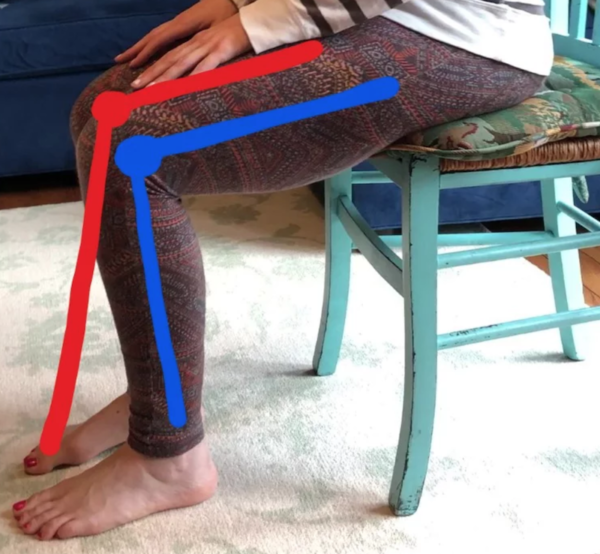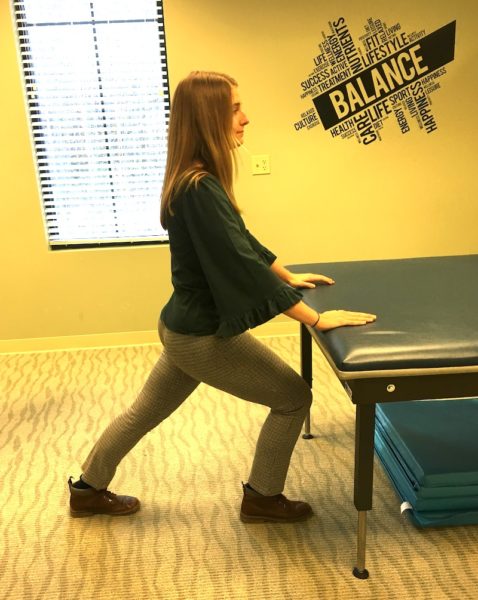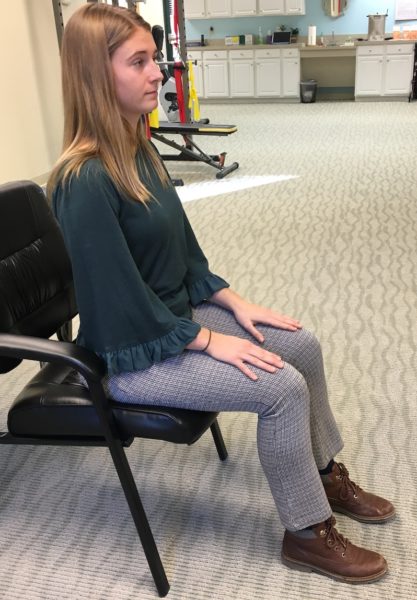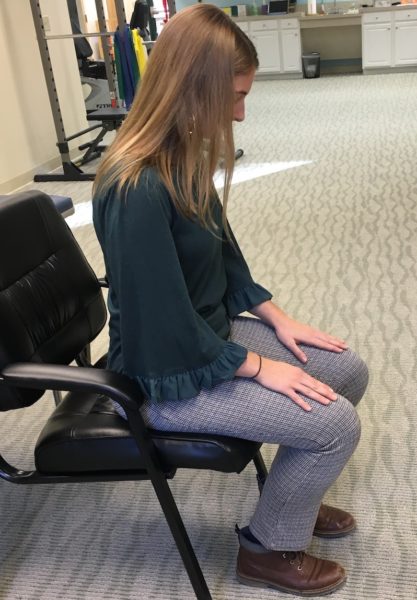How do you normally get up out of a chair? Just bounce right up or rock back and forth several times to gain a bit of momentum? Don’t even think about it or hope no one notices how hard it is for you. Or maybe you hope someone will notice and give you a hand.
Aging, an injury, or a health issue, arthritis, for instance, may make getting out of a chair a bit of a struggle. If that’s the case for you, I’ve got some helpful tips from Jason Adour, physical therapist, and owner of the Maine Strong Balance Center in Scarborough.
His first tip is to pay attention to the angle of your knees.

Researchers have identified that it takes nearly twice as much power to stand up out of a chair if your knees are bent to 75 degrees (represented in red) as opposed to the recommended 105 degrees (represented in blue). From a physics standpoint that completely changes your ability to stand up and the force that’s required is less than half.
Jason Adour
So, tuck your heels back a little. Here’s another picture to demonstrate a good angle. Many thanks to Kathleen Morlock, an intern at the Center, for being our model.
The next thing you want to do is create a little momentum. Standing up cold is usually difficult for anyone, but Jason pays attention if someone needs to push off with his/her hands in order to get up.
We use a screening test called the 30-second chair rise. We’ve got objective data related to age that tells us how many times you should be able to stand up without using your hands in 30 seconds. It gives us quite a bit of information about your strength. We know that people who have trouble with strength are 2.6 times more likely to have trouble with falls and balance.
Here’s a quick video of Kathleen demonstrating proper technique.
Core strength is important because it helps produce momentum as you begin to stand and then transfers it to your legs, which need to be strong. And as you move upward, you’re extending your hips and back, which also requires strong core muscles.
Standing up is pretty much a whole body experience. Different joints are active at different times all the way down to the feet and the ankle. My tip is to keep your calves flexible because that gives you a better advantage in terms of having the length you need to transfer your momentum into power and being able to stand because of the position of your ankle.
Kathleen shows us a basic calf stretch that will help loosen up those muscles.

It’s not always lack of strength that prevents a person from standing without hesitating or wobbling. Sometimes it’s poor balance and the issue could be inside your ear, in your vestibular system. This system is very sensitive to changes in gravity, such as … when you go from sitting to standing. It can become less
It uses sensory cells in your inner ear called hair cells. They gather data from your body, skin, muscles, and joints, sends it up to your brain. Your brain sends down motor information about how to make these corrections to stay balanced. We know that by the time you are in your fifties, you start losing these hair cells. It’s just normal, healthy aging, but when you have fewer sensory cells telling you where you are in space, it’s harder to balance.
Your cardiovascular system also plays a role — it needs to keep up with the change in gravity and if it’s slow to react for some reason, it can throw you off balance. Here’s a tip if you sometimes feel a
Sometimes, it seems a little silly, but even if you’re in a restaurant and you’re about to get up, you could do open and close your hand or march your feet a little bit. What we’ve found is that by doing something like this you’re priming the pump, meaning the heart, for movement. People can stand up a bit more successfully. You should also wait a minute before actually moving.
Of course, if you’re feeling dizzy or lightheaded, you should get it checked out to make sure nothing serious is going on. And as soon as you get the ok, if you haven’t been exercising, it’s time to start — you’ll find all kinds of good ideas here on Catching Health.
[/fusion_builder_column][/fusion_builder_row][/fusion_builder_container]



Leave A Comment